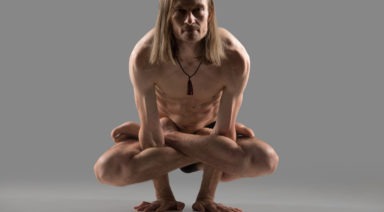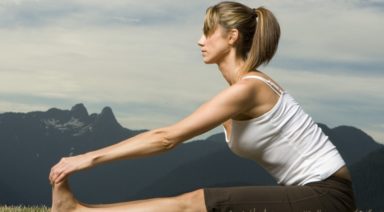Urdhva Mukha Svanasana: Upward Facing Dog Pose

ADJUSTMENTS | BENEFITS | SEQUENCING | SANSKRIT | STEPS
Urdhva mukha svanasana (OORD-vah MOO-kah shvon-AHS-anna) is a challenging backbend commonly seen as part of the transition series in vinyasa yoga.
Philosophy + Origin
The Mahabharata tells a story about a loyal dog who accompanies Yudhishthira, one of the five Pandava brothers, to the gates of heaven. Lord Indra greets the pair at the gates, but tells Yudhishthira that the dog is not allowed into heaven. Upon hearing this, the brother argues for the sake of the dog, telling Lord Indra of its devotion and loyalty. Yudhishthira says that because the dog has been so loyal to him, he will return that loyalty. At this moment, the dog is revealed to be Dharma, and Yudhisthira and his loyal companion are welcomed joyously into heaven. When practicing upward facing dog, remind yourself of the loyalty and dedication you have to your practice and showing up each day in your life. Persistence is always rewarded.
ADJUSTMENTS/MODIFICATIONS:
- Place your hands on blocks to create more space in the body.
- Look straight ahead rather than lifting the gaze.
- Place a rolled blanket under the thighs for lift and support.
STEP-BY-STEP:
- Begin lying on your belly with legs extended behind you, tops of your feet on the ground. Place your hands on your mat just behind your shoulders, close to your torso.
- Press your feet firmly into the ground to engage your legs.
- Reach your chest forward and up, then press into your palms to continue lifting the chest and head.
- Straighten your arms and continue to press into the tops of your feet. If your hips stay on the ground, bend your elbows to accommodate.
- Draw your shoulders away from your ears. Keep your gaze forward.
- Hold for 3-5 breaths then release back to the ground or to downward facing dog.
PREPARATORY POSES:
- Cobra pose | Bhujangasana
- Bridge pose | Setu bandhasana
- High to mid plank | Chataranga dandasana
SEQUENTIAL POSES:
- Downward facing dog | Adho mukha svanasana
- Dancers pose | Natarajasana
- Upward facing bow pose | Urdhva dhanurasana
COUNTER POSES:
- Childs pose | Balasana
- Standing forward fold | Uttanasana
SANSKRIT:
- Urdhva = upward
- Mukha = face
- Svana = dog
- Asana = pose
PHYSICAL BENEFITS:
- Expands your chest and shoulders.
- Strengthens the musculature of your shoulder blades, hip flexors and core.
- Strengthens your lower back, arms and wrists.
ENERGETIC BENEFITS:
- Relieves symptoms of mild depression.
- Energizes body and mind.
Legal Disclaimer Before participating in any exercise program or using any fitness products or services that may be described and/or made accessible in or through the Gaia Website and/or the Services, you should consult with a physician or other healthcare provider. Read more about Gaia’s Terms Of Use.
Parsvottanasana: Intense Side Stretch Pose

ADJUSTMENTS | BENEFITS | SEQUENCING | SANSKRIT | STEPS
From lengthening the spine to stretching the legs to calming the mind, there’s a little bit of everything in parsvottanasana (parsh-voh-tahn-AHS-ah-nah) Also known as intense side stretch pose or pyramid pose, this shape is helpful for finding balance while stretching hamstrings.
Parsvottanasana requires a combination of flexibility, strength, and patience. With the help of props such as blocks or a wall, this pose becomes accessible for everyone.
ADJUSTMENTS/MODIFICATIONS:
- Blocks: Place hands on blocks to help keep the torso long.
- Wall: Place hands on a wall in front of you to work on strengthening the muscles of the back.
- Heart opening variation: Take the hands in reverse prayer position behind the back to stretch and open your shoulders and chest while also challenging your balance. If reverse prayer isn’t accessible, you can still bring the arms behind the back, reaching for opposite elbows instead.
- Adjust your stance: If the back heel is lifted off of the floor, shorten the stance so you can push through the heel to activate the back leg. For more stability, widen your stance.





































